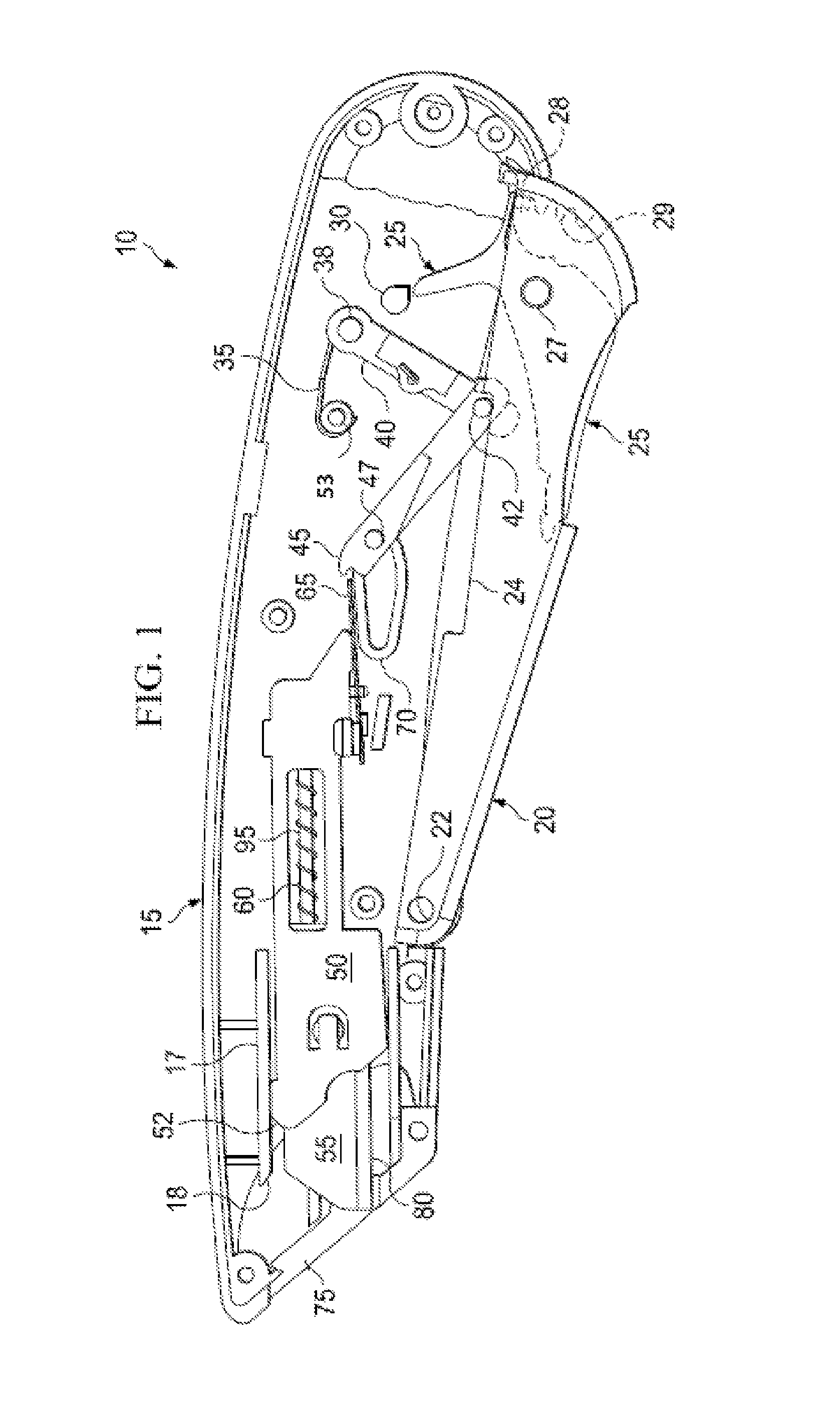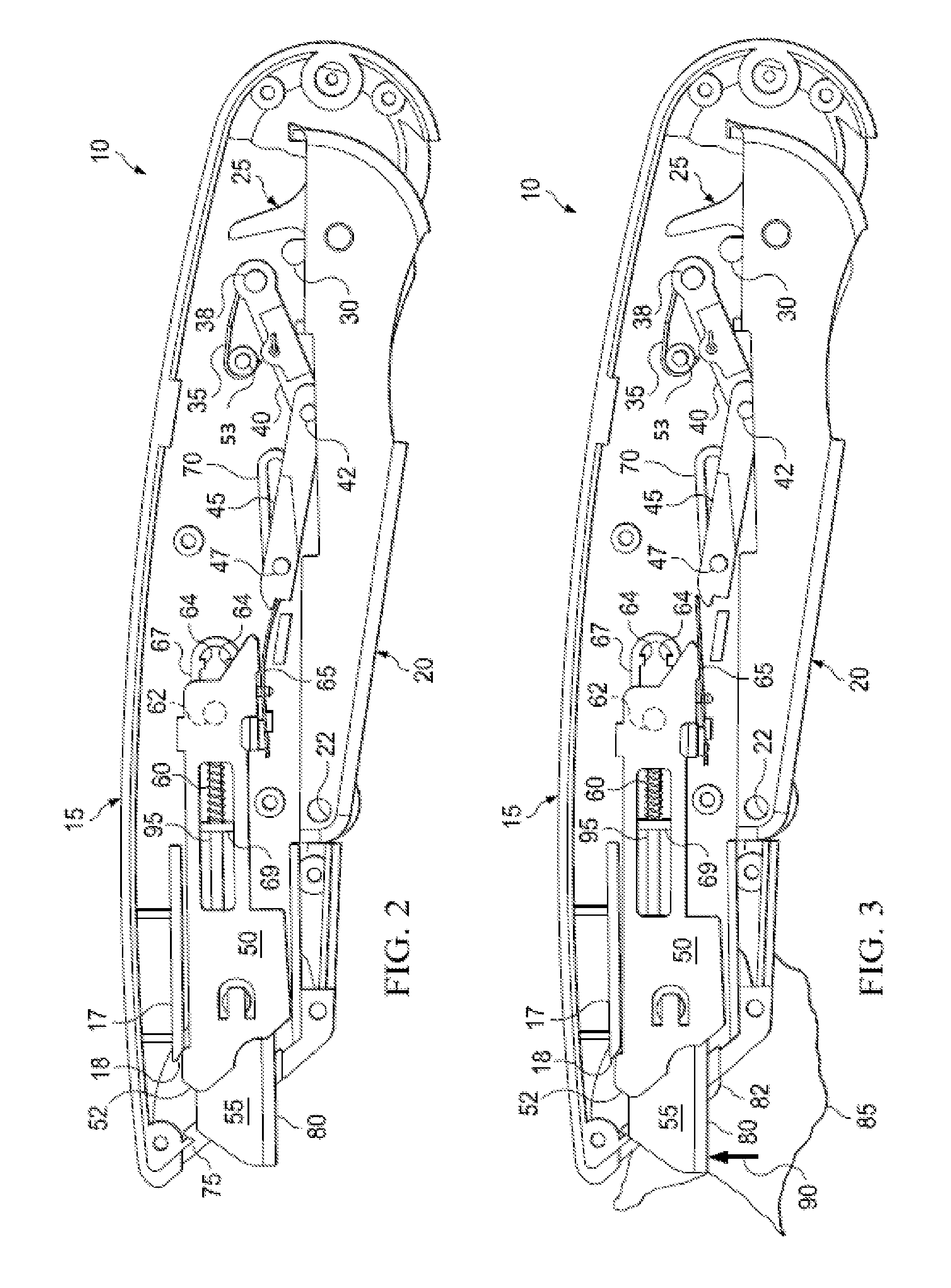Utility cutter
a utility cutter and cutting tool technology, applied in the direction of thrusting weapons, white arms/cold weapons, weapons, etc., can solve the problems of high operator injury risk, injury to the user or others, and high chance of operator injury, so as to prevent the blade from being decoupled, the cutting or cutting of near frictionless or low friction materials is safer. , the effect of preventing the blade from falling o
- Summary
- Abstract
- Description
- Claims
- Application Information
AI Technical Summary
Benefits of technology
Problems solved by technology
Method used
Image
Examples
Embodiment Construction
[0025]A utility cutter according to the present disclosure, generally, includes a protective handle or housing operable to enclose a blade shuttle and a blade coupled to the blade shuttle. Upon actuation of the utility cutter by a user by, for example, rotating a blade trigger, the blade shuttle and blade may be extended. At least a portion of the blade is exposed from the housing once the blade shuttle is extended. The user may cut or slice a variety of materials, such as polyfilm, corrugated board, adhesive tape, plastic bags or wrap, or cardboard, with the exposed blade. To ensure or increase the safety of the user, other persons, or valuable property, the exposed blade may automatically retract within the housing when the blade becomes disengaged from the material. For instance, a force directed substantially perpendicular to a cutting edge of the blade may disengage the blade shuttle (or a component attached thereto, such as a leaf spring) from one or more components of a blade...
PUM
 Login to View More
Login to View More Abstract
Description
Claims
Application Information
 Login to View More
Login to View More - R&D
- Intellectual Property
- Life Sciences
- Materials
- Tech Scout
- Unparalleled Data Quality
- Higher Quality Content
- 60% Fewer Hallucinations
Browse by: Latest US Patents, China's latest patents, Technical Efficacy Thesaurus, Application Domain, Technology Topic, Popular Technical Reports.
© 2025 PatSnap. All rights reserved.Legal|Privacy policy|Modern Slavery Act Transparency Statement|Sitemap|About US| Contact US: help@patsnap.com



